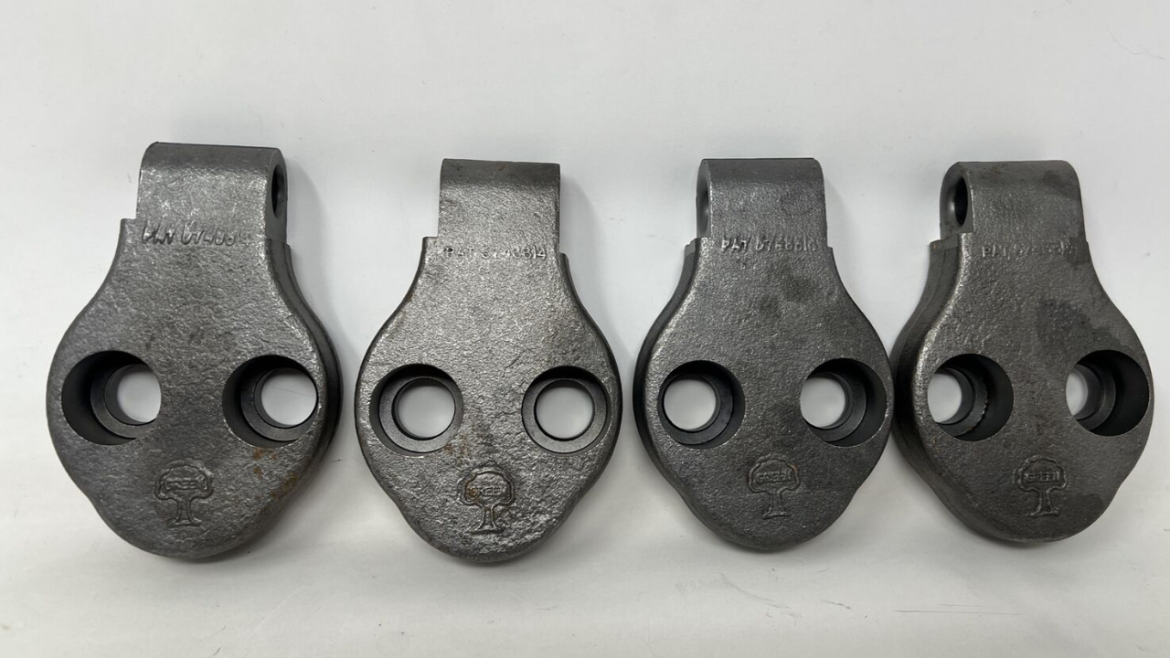Identifying worn or damaged stump grinder pockets is crucial for maintaining the efficiency and safety of your stump grinding operations. Stump grinder pockets, also known as holders or blocks, are essential components that hold the stump grinder teeth in place.
Over time, these pockets can wear out or sustain damage due to the high impact forces and abrasive conditions they are exposed to during stump grinding. In this article, we will explore how to identify worn or damaged stump grinder pockets and the signs that indicate it’s time to replace them for optimal performance and safety.
Identifying Damaged Stump Grinder Pockets
By promptly replacing worn or damaged pockets, you can ensure the longevity and optimal performance of your stump grinder, enhancing your productivity and safety on the job site. You can consider given mentioned factors to identify damaged stump grinder cutter teeth and pockets:
Visual Inspection
The first step in identifying worn or damaged stump grinder pockets is a visual inspection. Examine the pockets carefully for signs of wear, such as cracks, chips, or deformation. Look for any irregularities or changes in the pocket’s shape that could affect the fit and stability of the stump grinder teeth.
Additionally, check for any signs of excessive wear, such as metal shavings or debris around the pocket area, which may indicate that the pocket is wearing out.
Loose Teeth
If you notice that the stump grinder teeth are becoming loose or falling out during operation, it could be a sign of worn or damaged pockets. Pockets that have worn out or sustained damage may no longer hold the teeth securely in place, leading to instability and increased risk of tooth loss.
Loose teeth not only reduce the grinder’s efficiency but also pose safety hazards to operators and bystanders.
Reduced Grinding Performance
Worn or damaged stump grinder pockets can affect the overall grinding performance. If you notice a decline in the grinder’s cutting efficiency or it takes longer to remove stumps, it may be an indication that the pockets are no longer providing the necessary support and stability to the teeth. In such cases, replacing the worn pockets can restore the grinder’s performance and productivity.
Increased Vibration and Noise
Damaged or worn stump grinder pockets can result in increased vibration and noise during operation. Excessive vibration can be a warning sign of misalignment or instability caused by worn-out pockets. Additionally, unusual noises coming from the grinder can indicate that the teeth are not securely held in place due to damaged pockets.
Difficulty in Installing New Teeth
If you are experiencing difficulties in installing new stump grinder teeth, it could be due to worn or damaged pockets. Over time, the pockets may wear down or sustain damage, making it challenging to properly fit and secure new teeth. If you encounter resistance or find that the teeth do not fit snugly in the pockets, it’s time to consider replacing the worn-out holders.
Regular Maintenance and Inspection
Regular maintenance and inspection of your stump grinder pockets are essential to identify any signs of wear or damage early on. Implement a maintenance schedule that includes checking the condition of the pockets, along with other worn parts, after each grinding job.
By catching potential issues early, you can address them promptly and avoid costly downtime and repairs.
Manufacturer’s Recommendations
Consult the manufacturer’s guidelines and recommendations for the specific type of stump grinder pockets you are using. Manufacturers often provide guidelines on the expected lifespan of the pockets and when they should be replaced. Adhering to these recommendations can help ensure the optimal performance and safety of your stump grinder.
Final Words
Identifying worn or damaged stump grinder pockets is crucial for maintaining the efficiency and safety of your stump grinding operations. Visual inspection, loose teeth, reduced grinding performance, increased vibration and noise, difficulty in installing new teeth, regular maintenance, and following the manufacturer’s recommendations are all essential in determining when it’s time to replace the pockets.
